Balimbing: Filipino Queerness
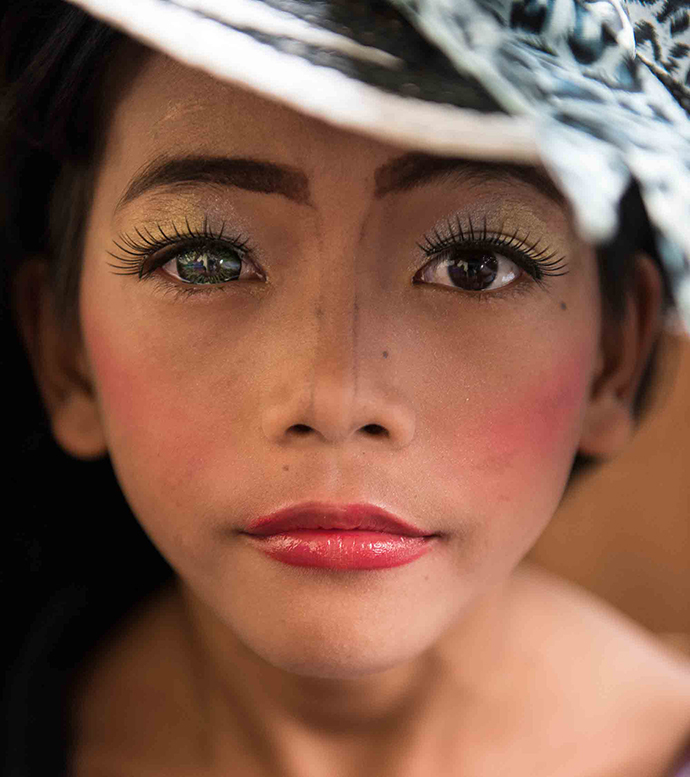
Gregory Lorenzutti was working in Tacloban City when he met a group of young performers preparing for the first fiesta since Typhoon Haiyan had devastated the region, 18 months earlier. In this photography series, Lorenzutti captures the beauty of Filipino queerness, and the complex story of how LGBTIQ families were affected by the city’s rebuilding.
The title Balimbing came to me as a flashback. While working in Tacloban City, Philippines, my friend Zita took me to her family’s farm. Along the lush green pasture was a row of starfruit trees. The floor was covered in fruits. That moment took me right back to my childhood in Brazil, playing under a starfruit tree in my grandparents’ backyard. The early moments of discovering my sexuality came back to me so vividly. I sat and cried in gratitude to the Philippines for having given that to me. Balimbing (meaning ‘starfruit’) is about that beautiful queer community. It is about love.
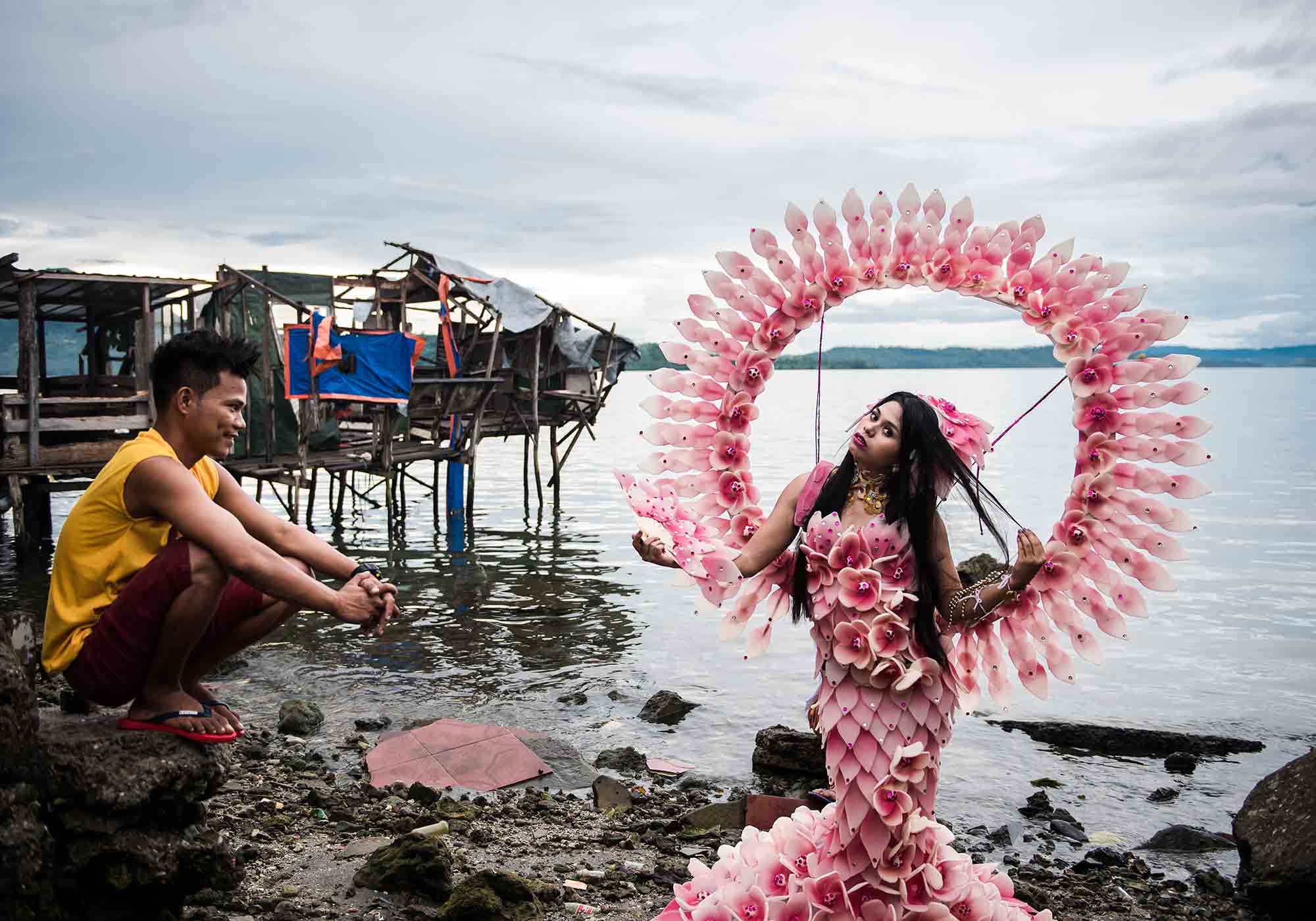
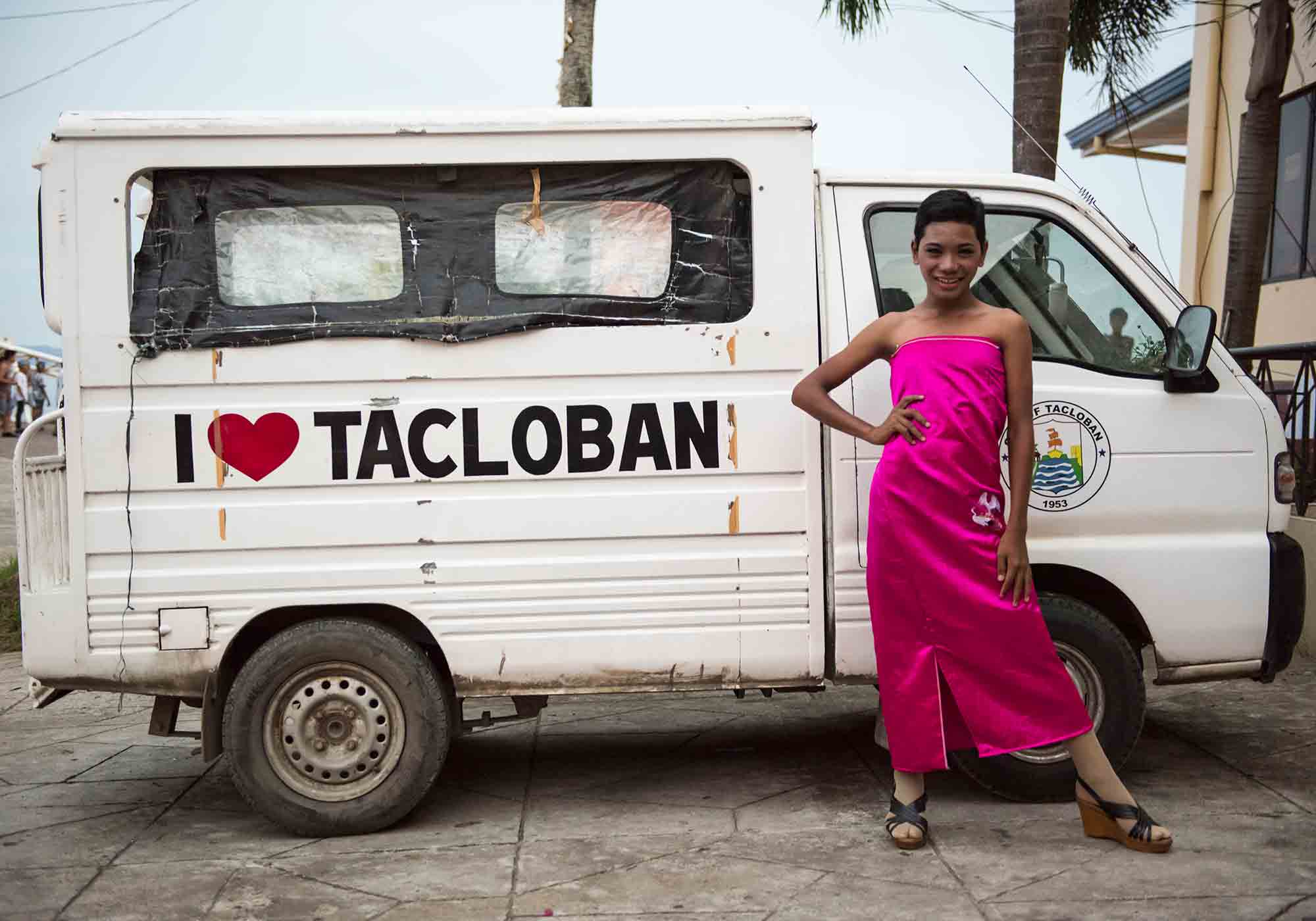
I was born in a small town in Brazil and moved to Rio de Janeiro quite young. My family is a mix of Italian, German and Austrian immigrants, a passionate cultural melting pot. My work exists on the edges of dance and photography. I am not sure when one finishes and the other starts. Australia came into my life as a way out of a repetitive cycle I’d trapped myself in as an artist. I had to get out of Brazil to rediscover why I make work. Moving to Australia gave me permission to go further into this uncharted terrain.
I arrived in Tacloban in 2015, 18 months after Typhoon Haiyan. The wounds of the storm were still open in the city and in people’s minds. Everywhere I looked, I found traces and memories of what had happened on that day. Practically everyone had lost someone. Then I came across the preparations for a big religious fiesta. It was the first one after the typhoon and the whole community was excited to be able to celebrate Santo Niño again. It was a collective fever!

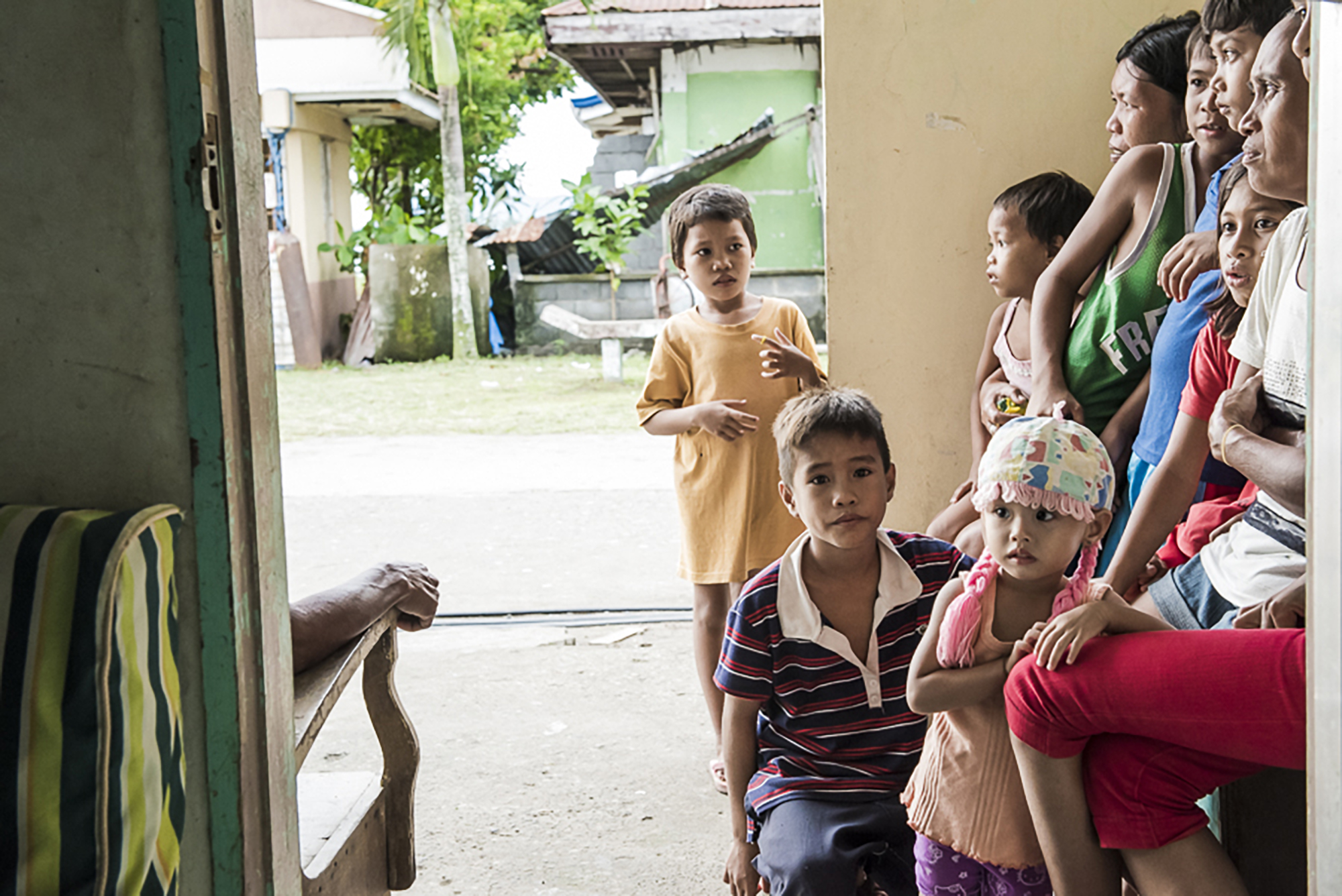
A photo is a result of a deep listening. It takes time to reveal itself. Balimbing was a project that started from a relationship. I was working with artists Bhenji Ra and Justin Shoulder on a film installation in Tacloban. On a day off, I wandered the streets. I met an incredibly talkative and curious group of young performers. We got along very well and went for long walks across the city while eating green mangoes with salt and chilli. We spoke about many things: love, being gay, beauty pageants, the parade and Typhoon Haiyan. One day, I began photographing them.
Carnival and fiesta are not the same thing, although both have European origins, and paganism and religion mix in a way that can’t be separated. As a child, I would imagine being part of Carnival, playing dress-ups and parading in the backyard. I can still hear the drums playing… I get shivers thinking about it. The tropical magnificence, the humidity, the street food from makeshift carts, the crowd squeezing in to get the best spot, young and old holding their breath to see their community parading – it was so familiar to me. While photographing the fiesta, I had to stop sometimes. I thought I had too much sweat in my eyes from the scorching sun, but actually I was crying.

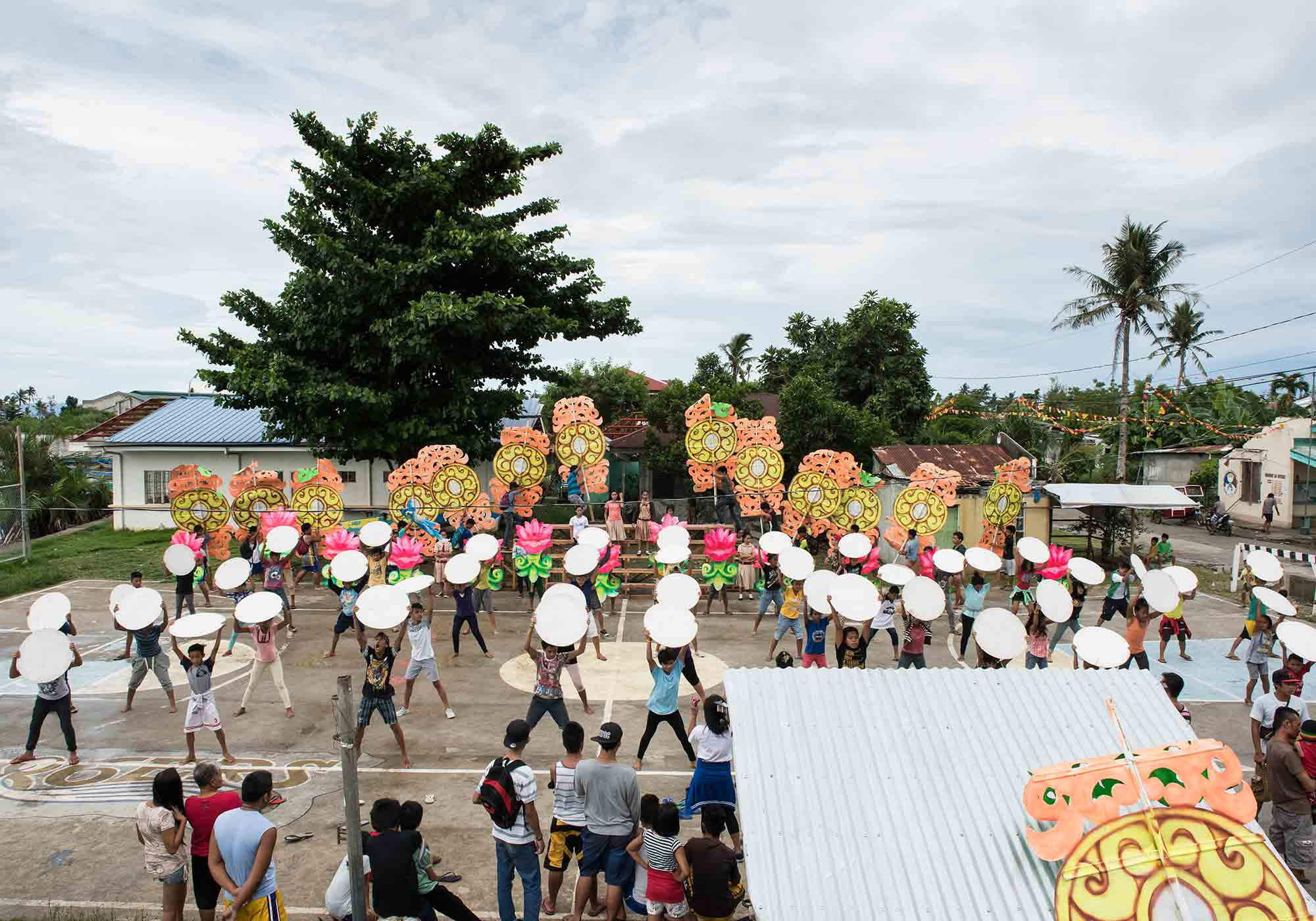
In the process of rebuilding the city, LGBTQI couples were not eligible for resettlement because they didn’t match the official definition of ‘family’. Yet that same community was the driving creative force and heart and soul behind the fiesta. A large majority of the queer community have deep faith in the Catholic church and are fervent members. I heard stories of gay couples going to the church on their own and asking permission and the blessings of Santo Niño to live together. It is a complex relationship that becomes clear if you take into account the pre-colonial importance of trans people in society, before they were demonised by foreign invasion.
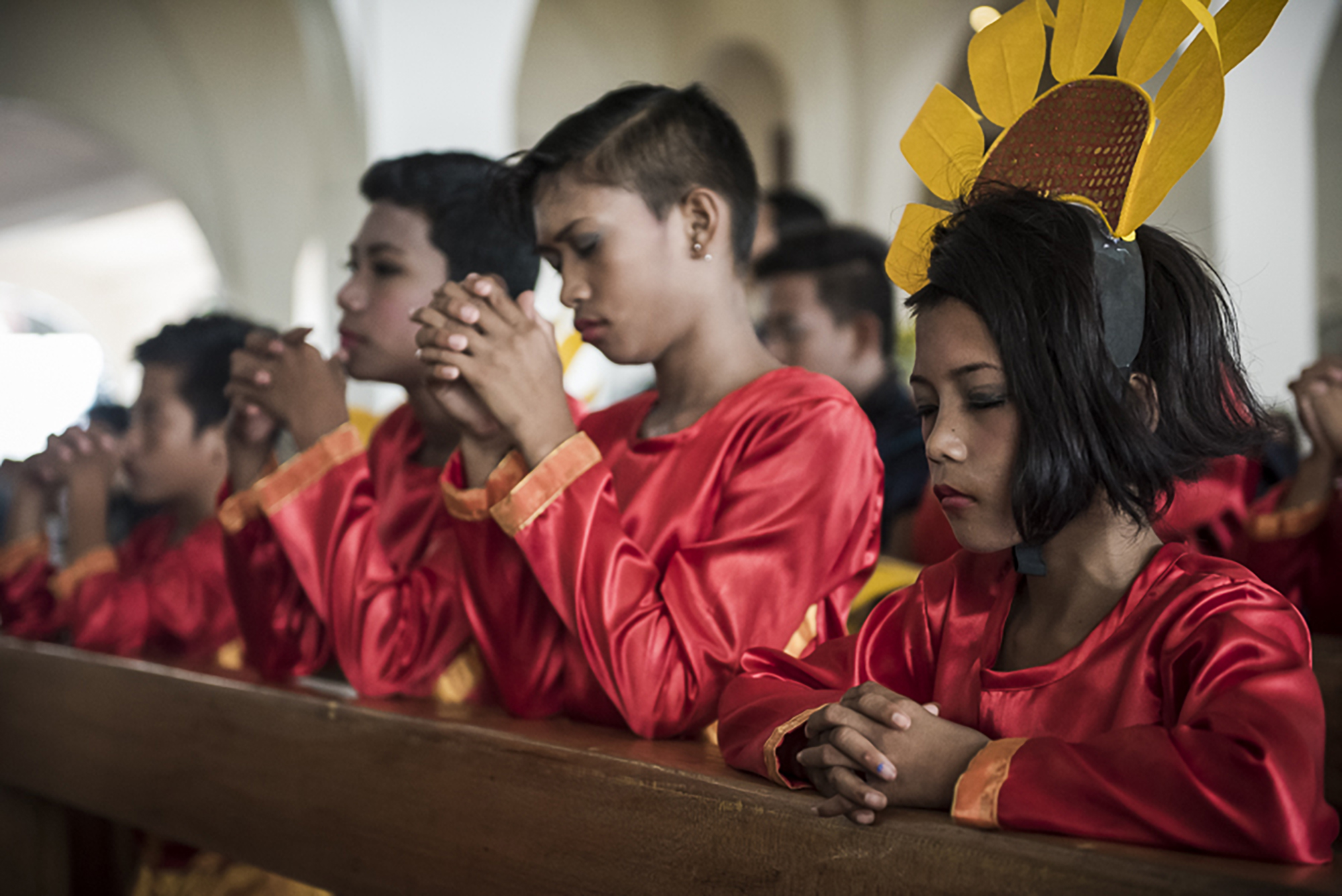
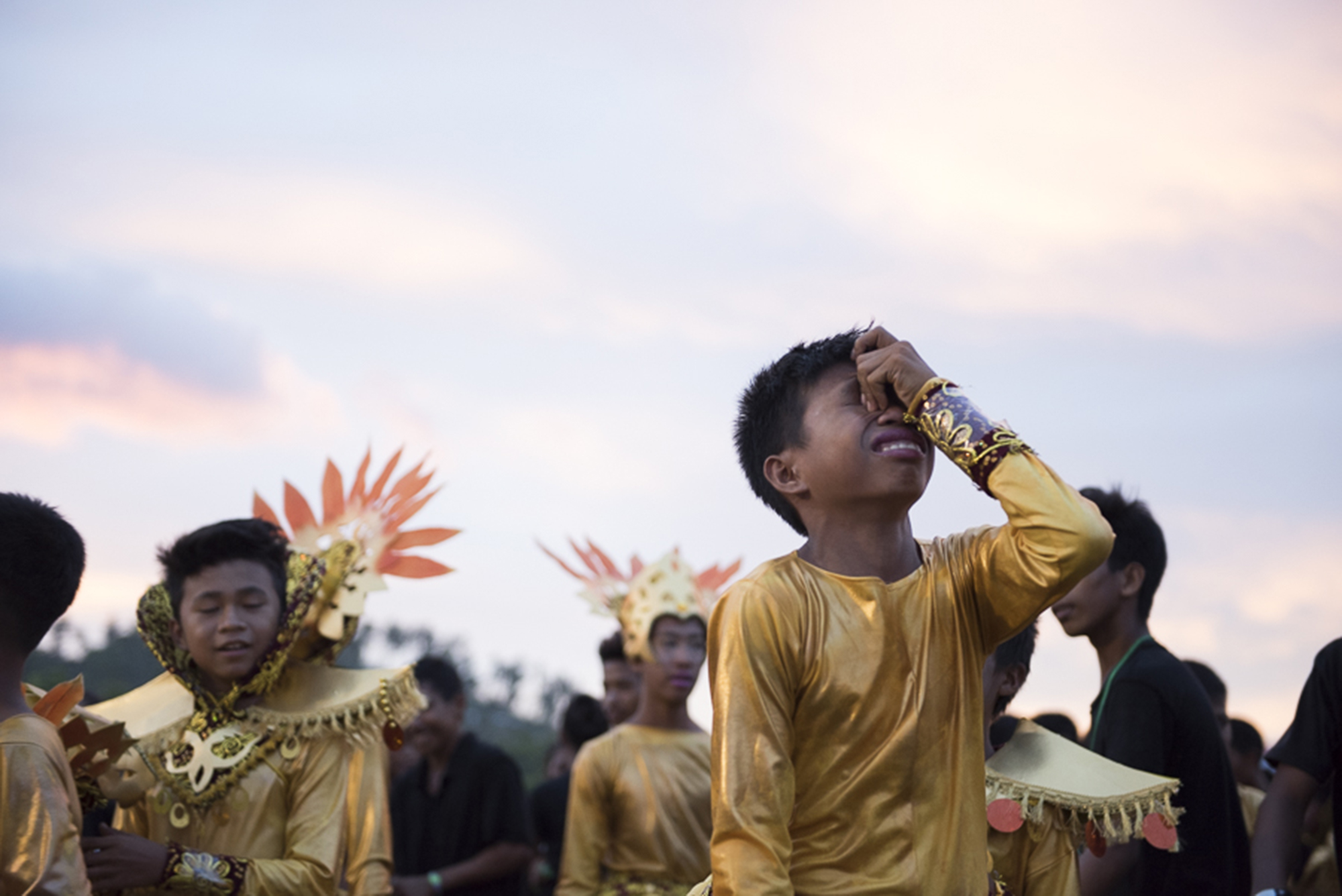
Tacloban is considered a highly urbanised city in the Philippines, although sewerage and fresh water are for a few. I wanted to know if the queer community would be seen in the main celebration of the fiesta, the Parade of Lights, which goes for hours across the town. They were in the front rows and on top of the floats. And recently Tacloban elected its first trans woman council member. A significant moment for the city. But yes, there is a long way to go when it comes to official policies recognising the diversity of the LGBTQI community. The rise of Christian and Muslim fundamentalism in the Philippines has little or no tolerance to gay rights.
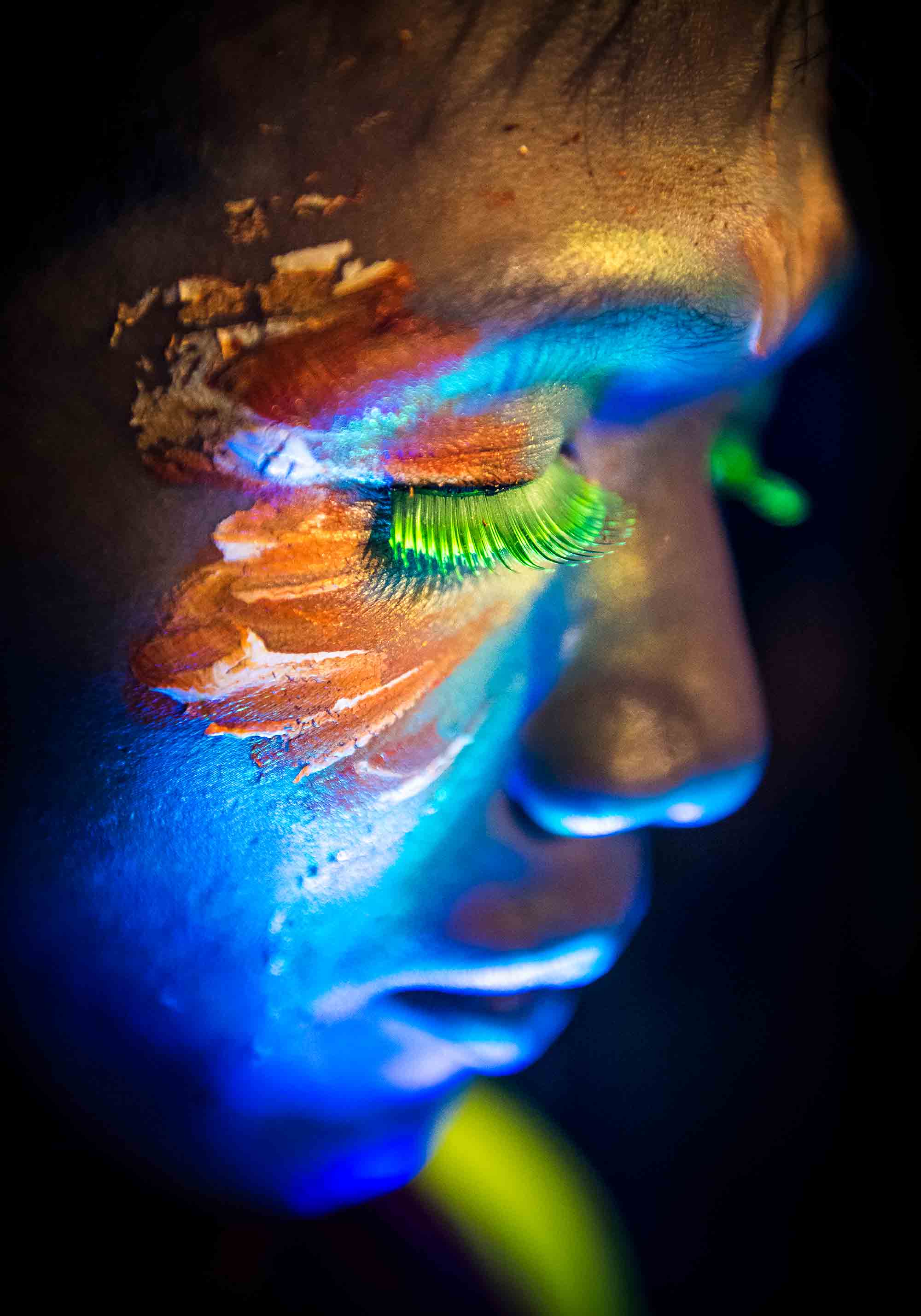
After watching the rehearsals of one of the Barangay (a Filipino community), a group of teenagers came to me. They told me there was no queer pageant for them. Justin and Bhenji and I decided to organise one. Christian, our Filipino friend, was the MC, Bhenji and Justin were the jury, and I was the media. We held it in a public square along the bay, where you could see a pile of wrecked cars from Typhoon Haiyan working as a protection for the next one. Those young people had faced the horrors of a massive storm and tsunami and it felt good to see them celebrating life.


The English word that I heard the most in Tacloban was ‘bond’. It was used to talk about families and friends. Life can disappear in one night in the Philippines. It is a place full of people going about their daily business, trying to survive in a volatile environment while still looking after each other. There is a lot of struggle, but there is also an ancient, pre-colonial sense of belonging and acceptance that is unique.
A big thank you to Gregory for his words and photographs, and to everyone who was photographed for this piece. A shorter version of this article also appears in issue #9 of Assemble Papers, ‘Radical Family‘. You can pick up a copy here.